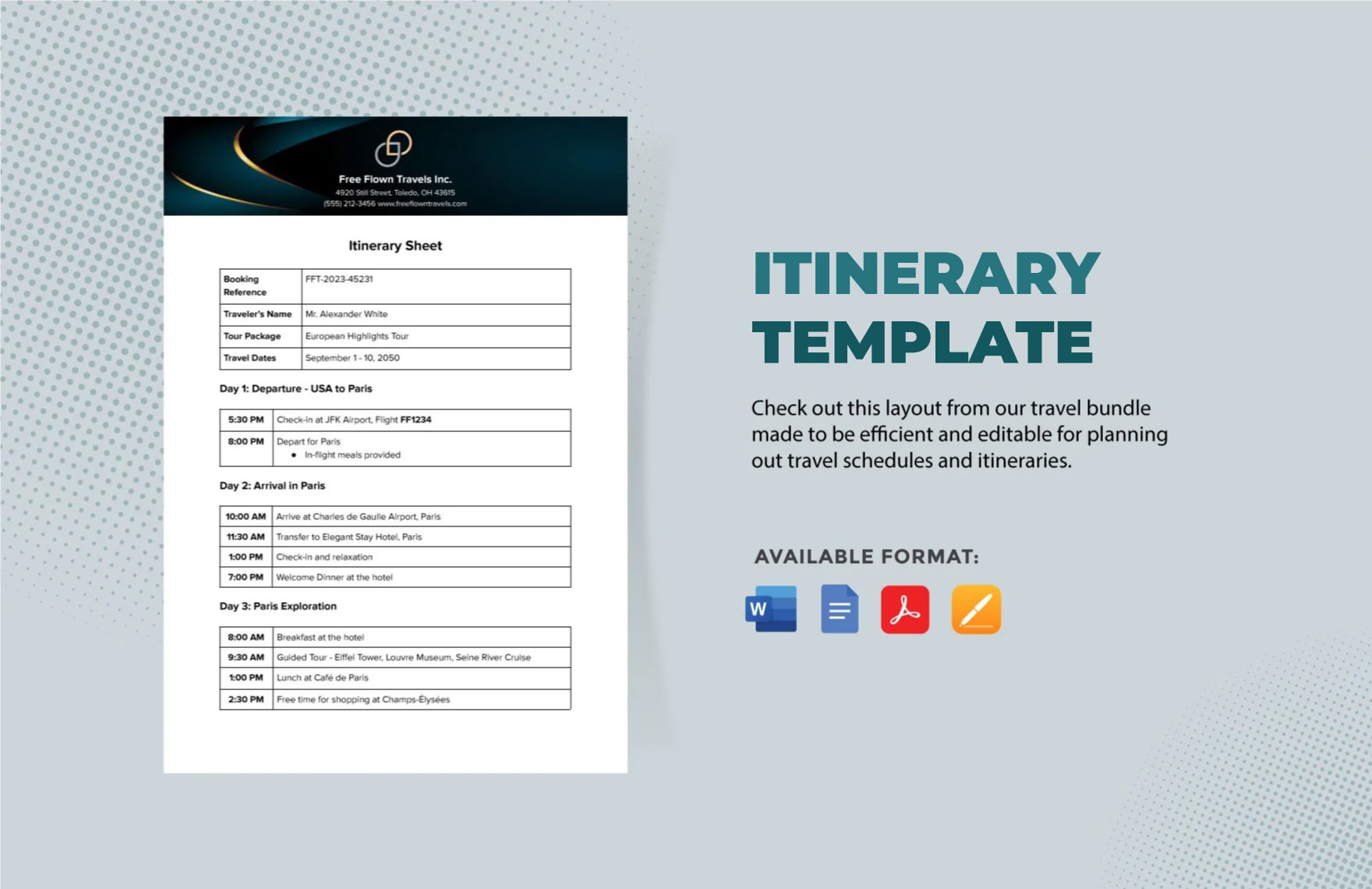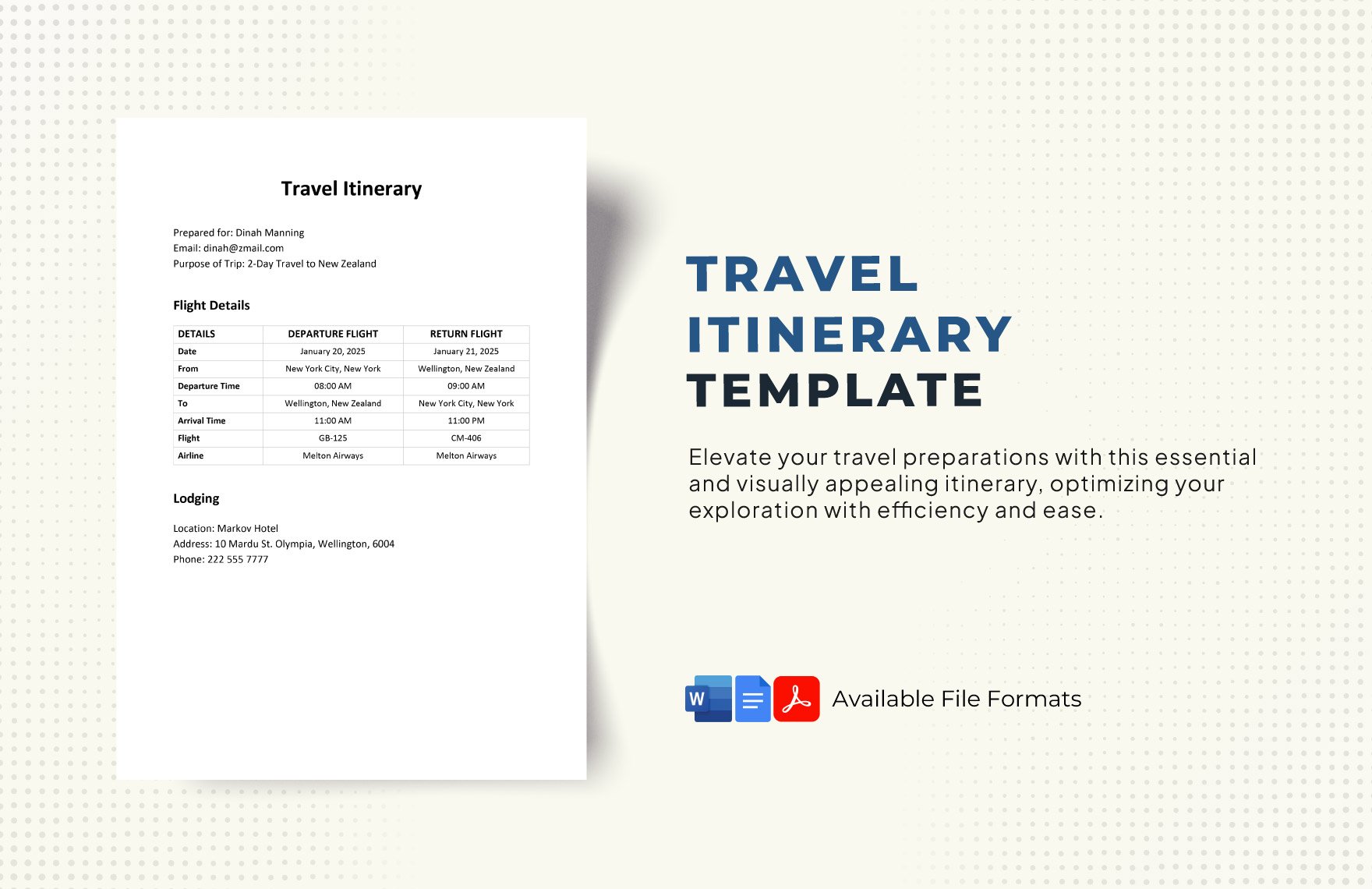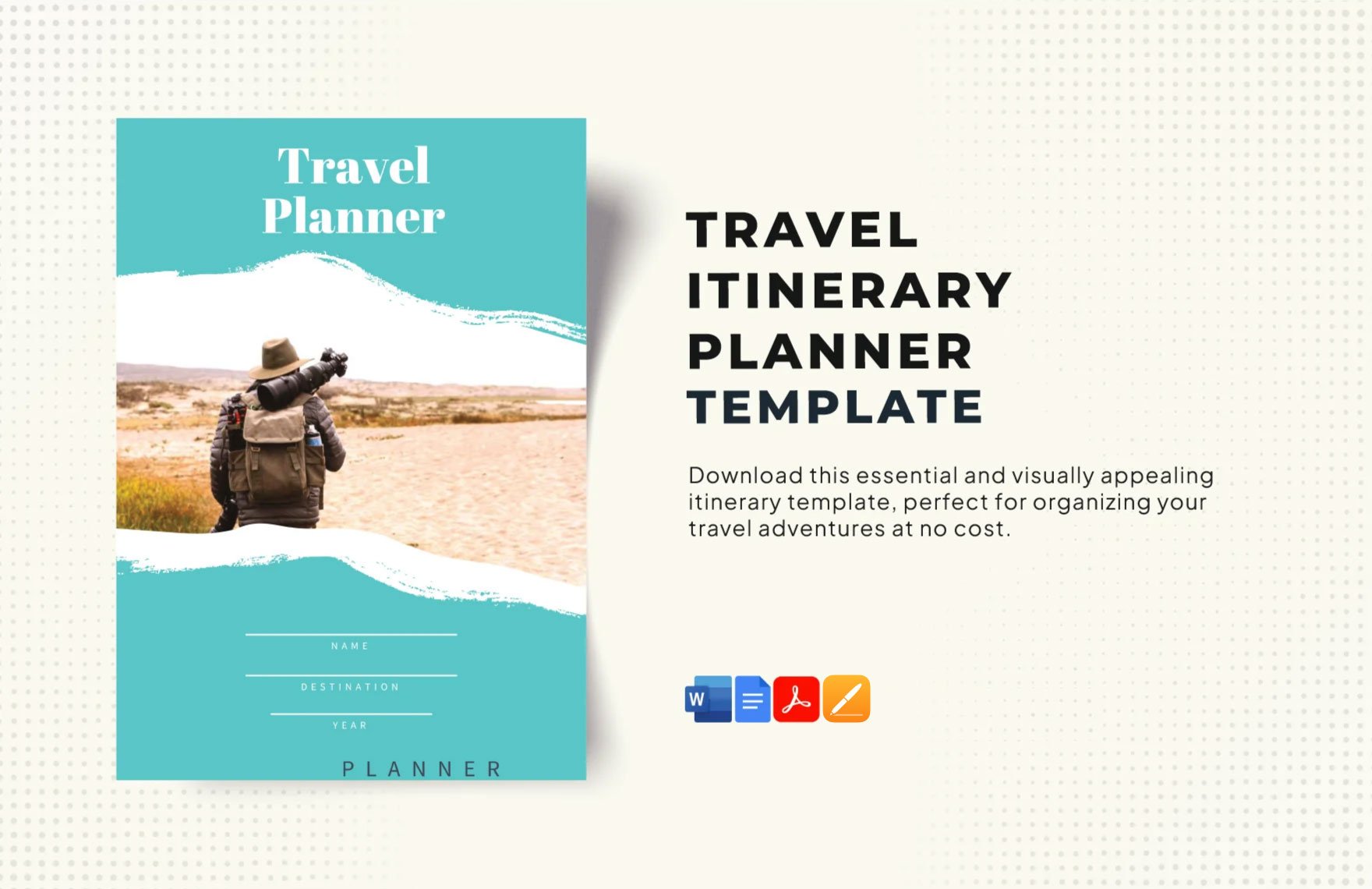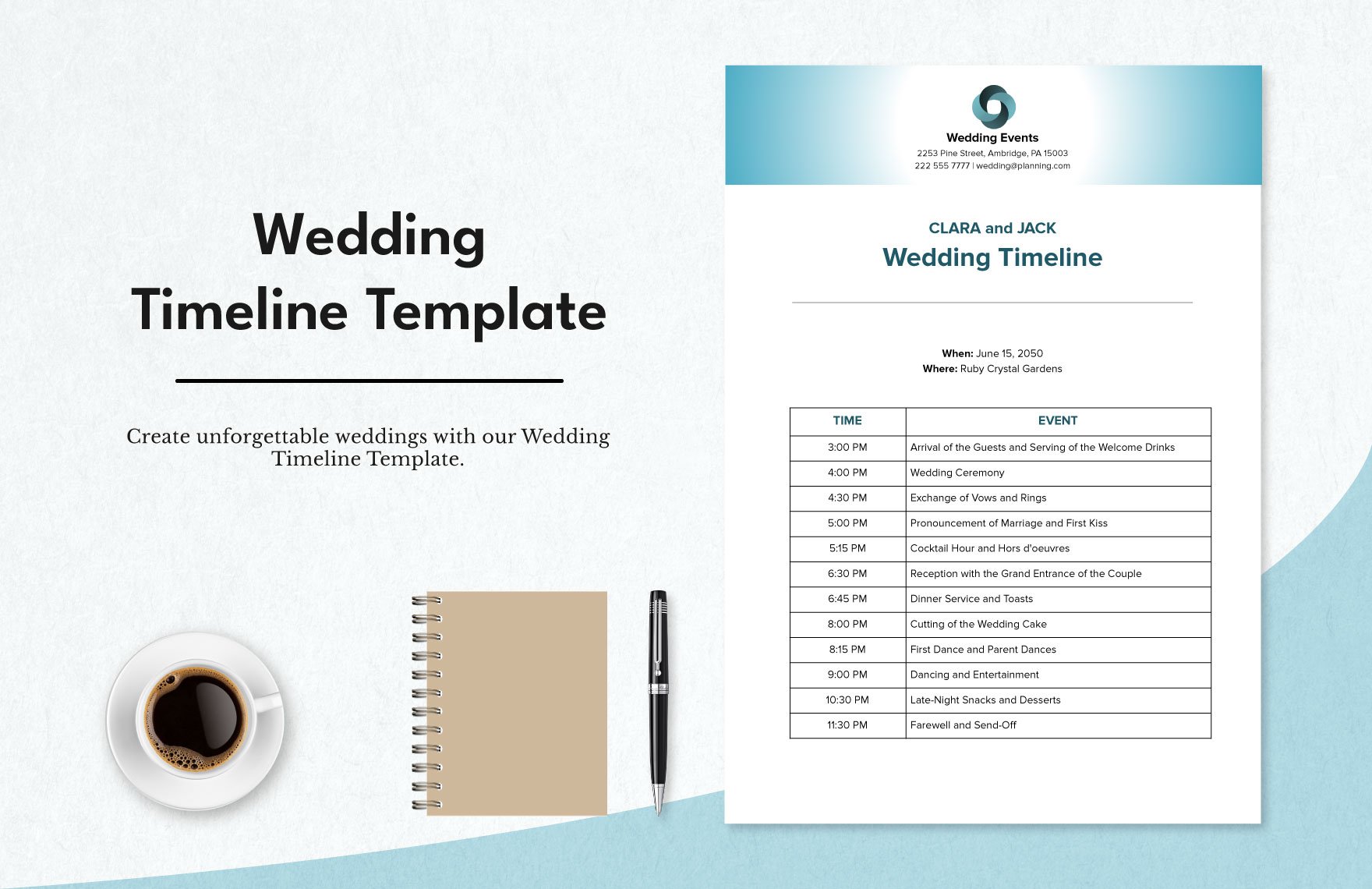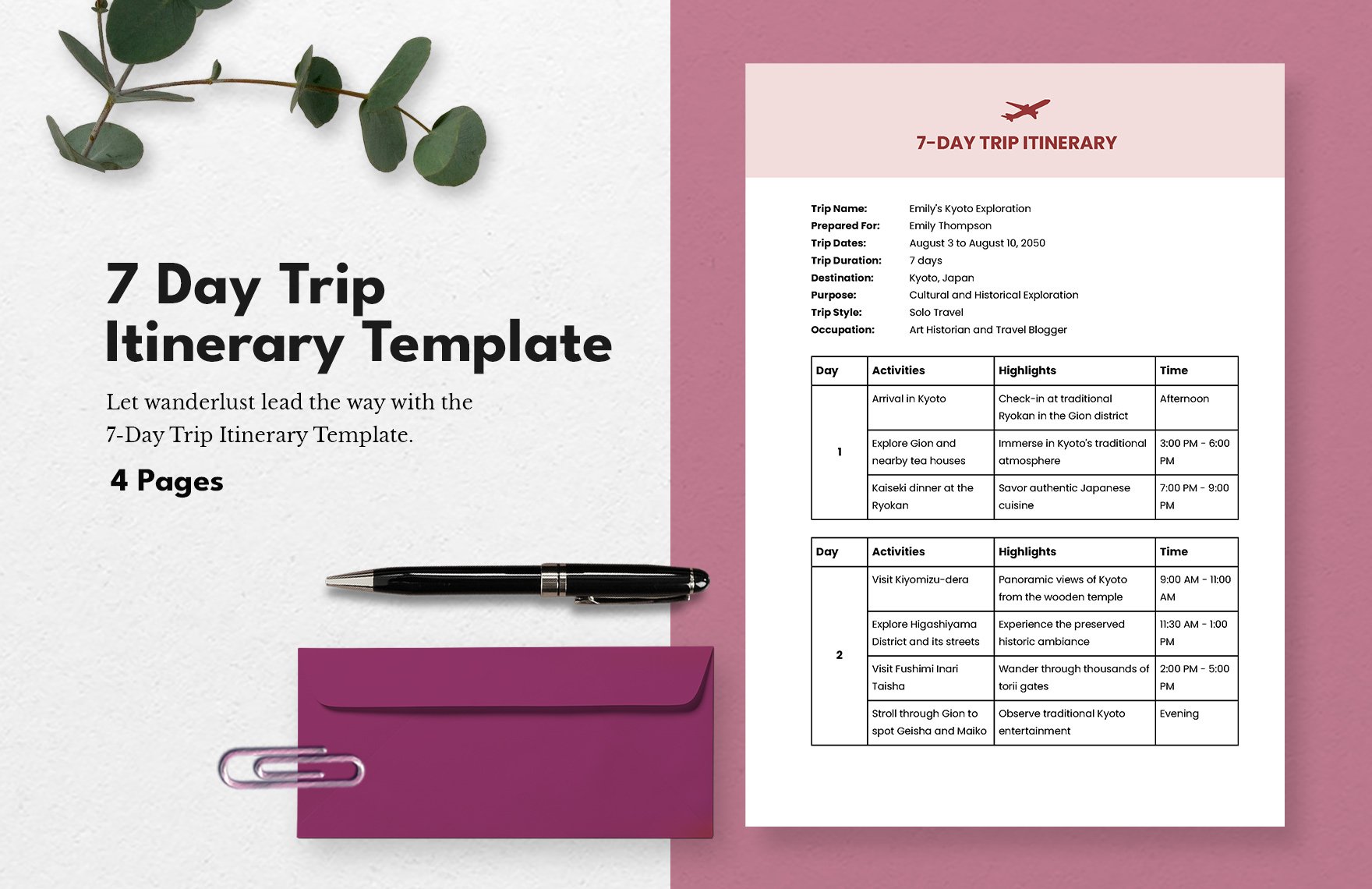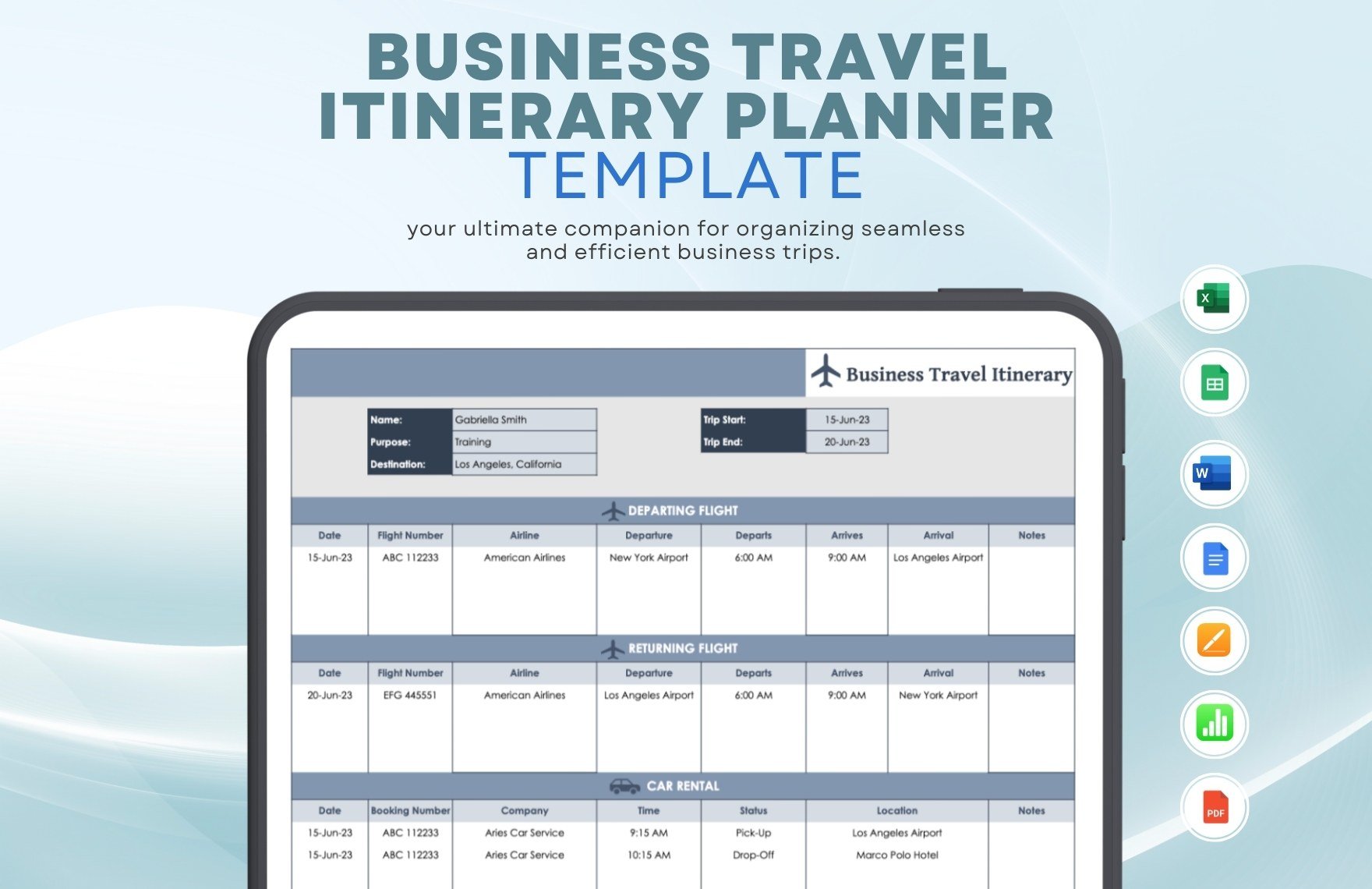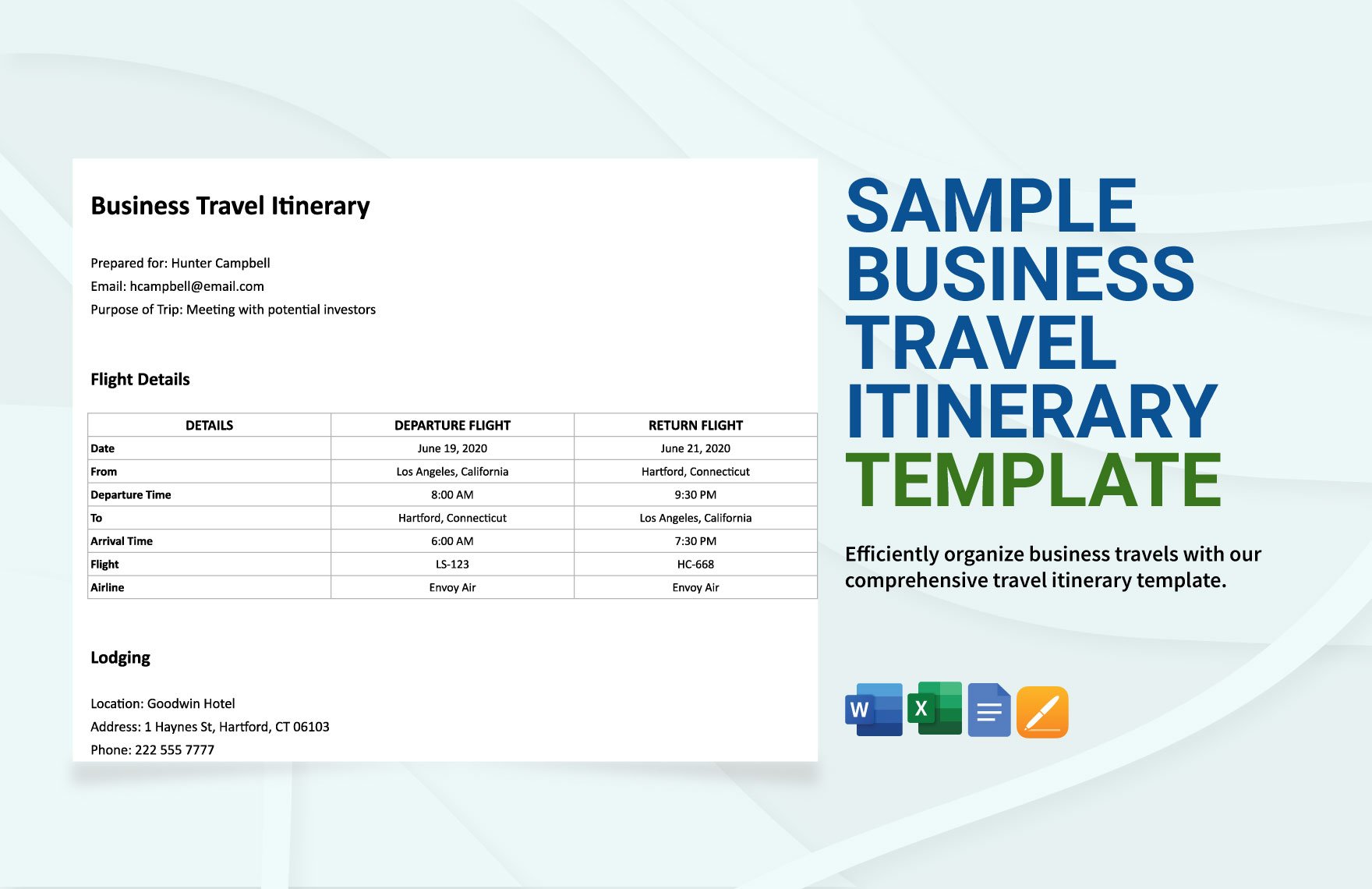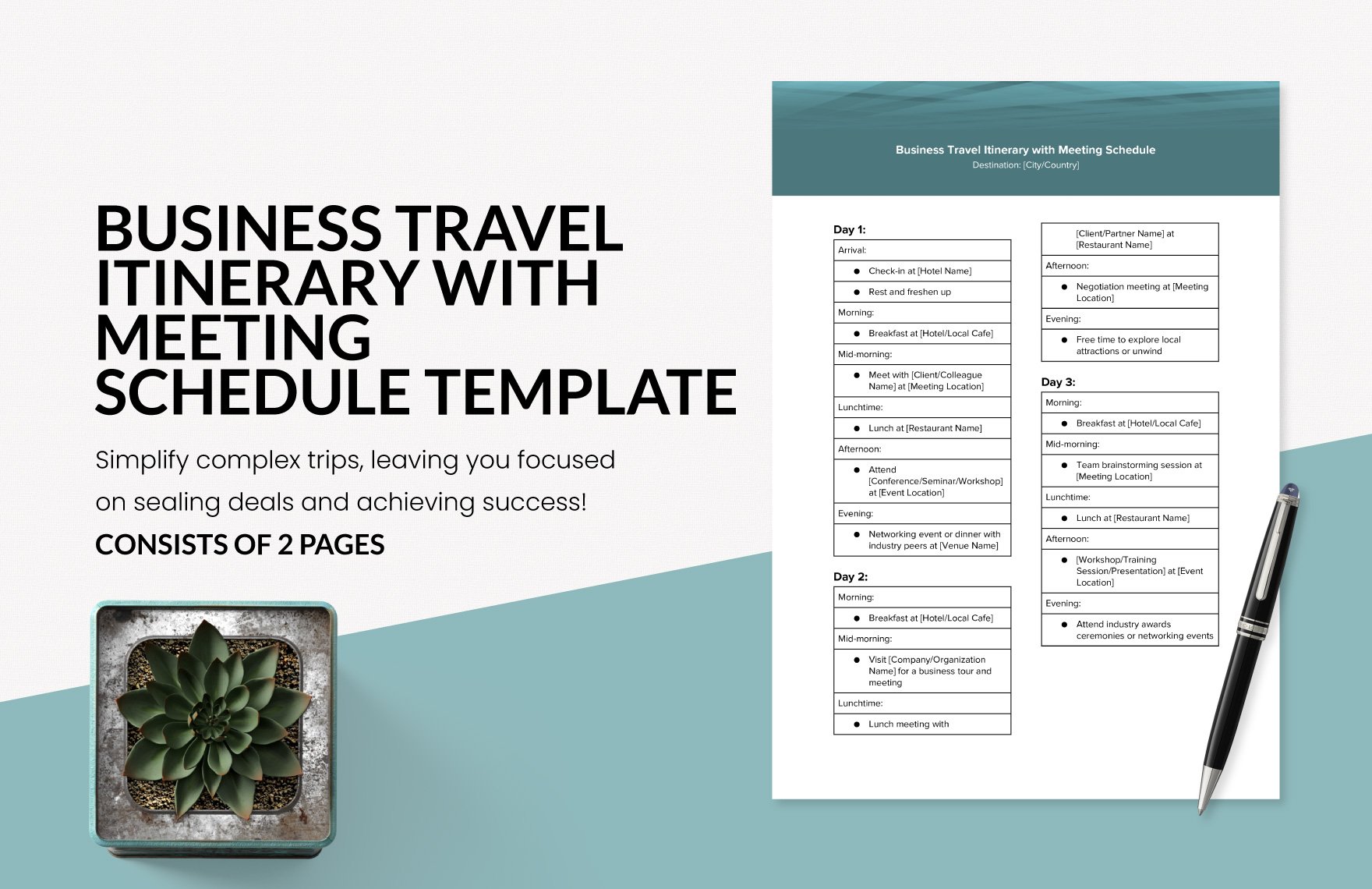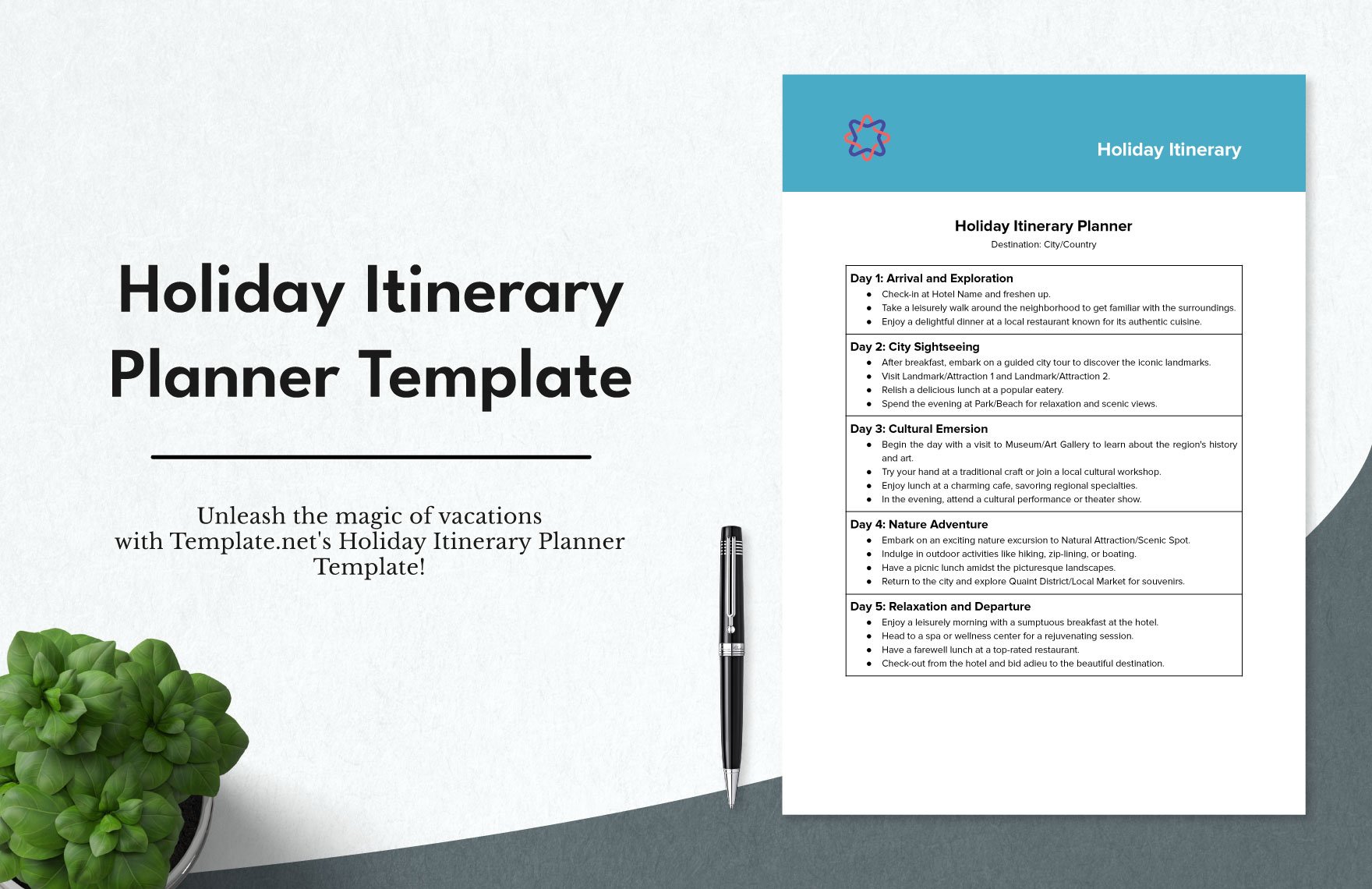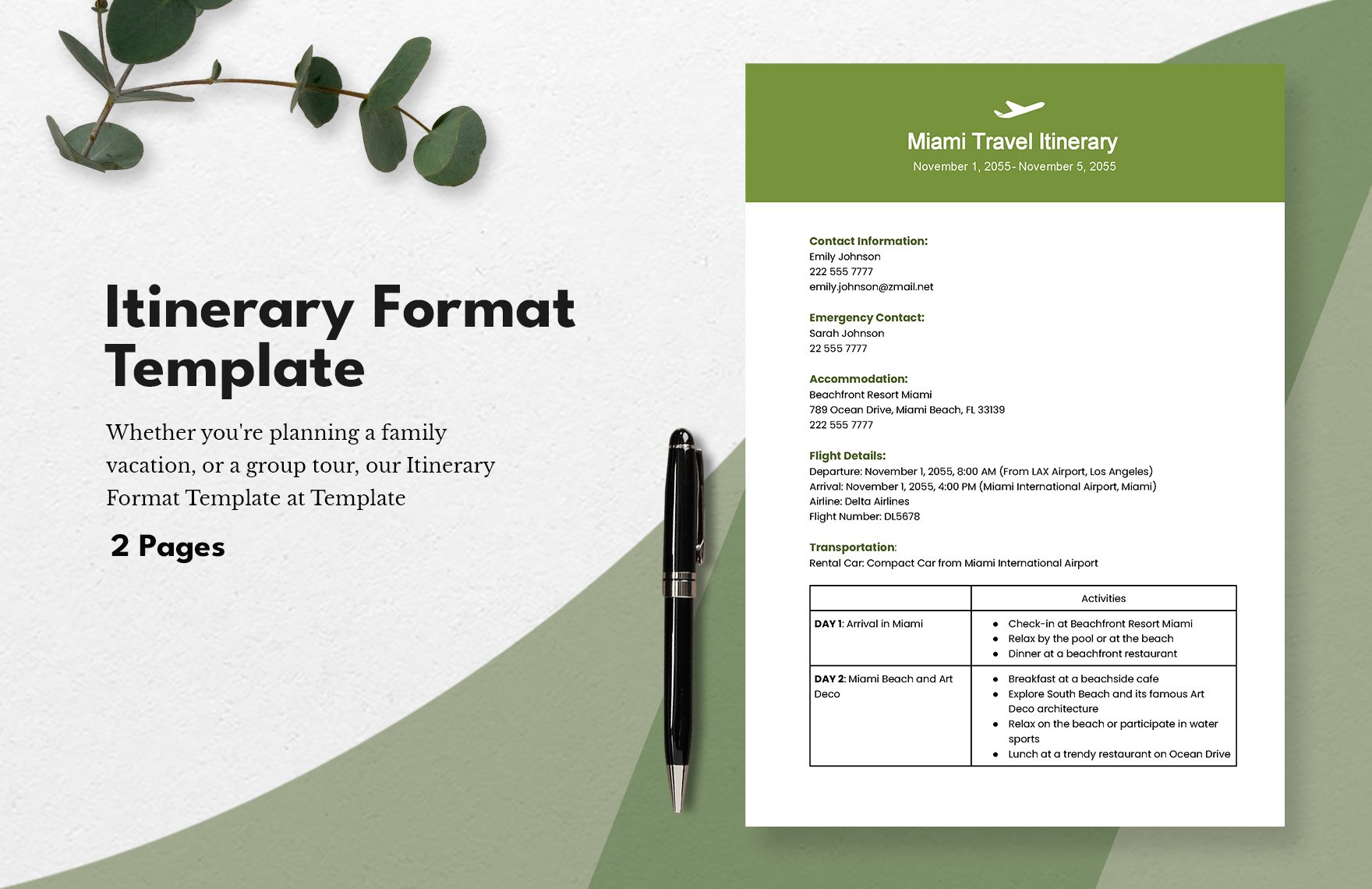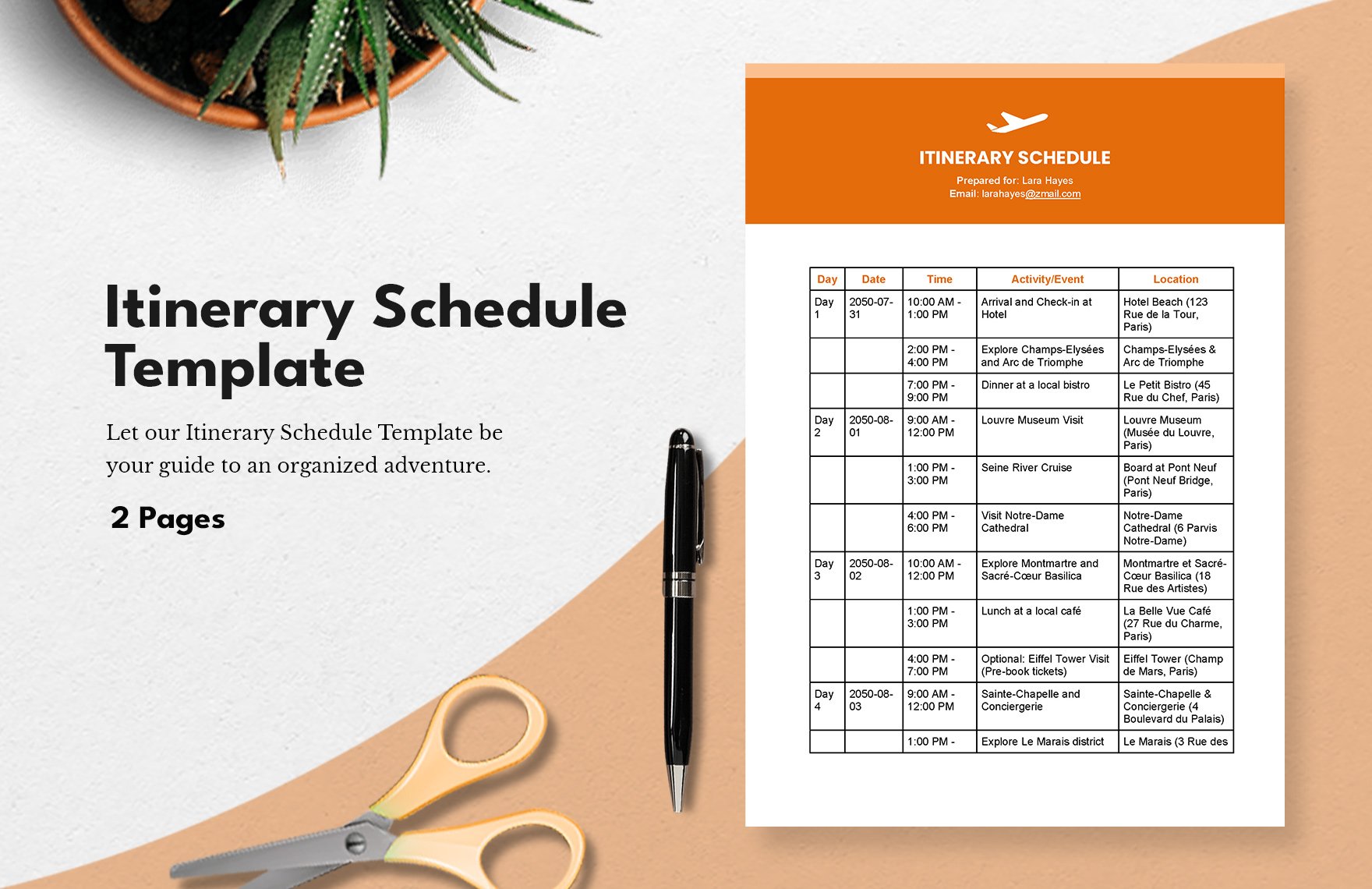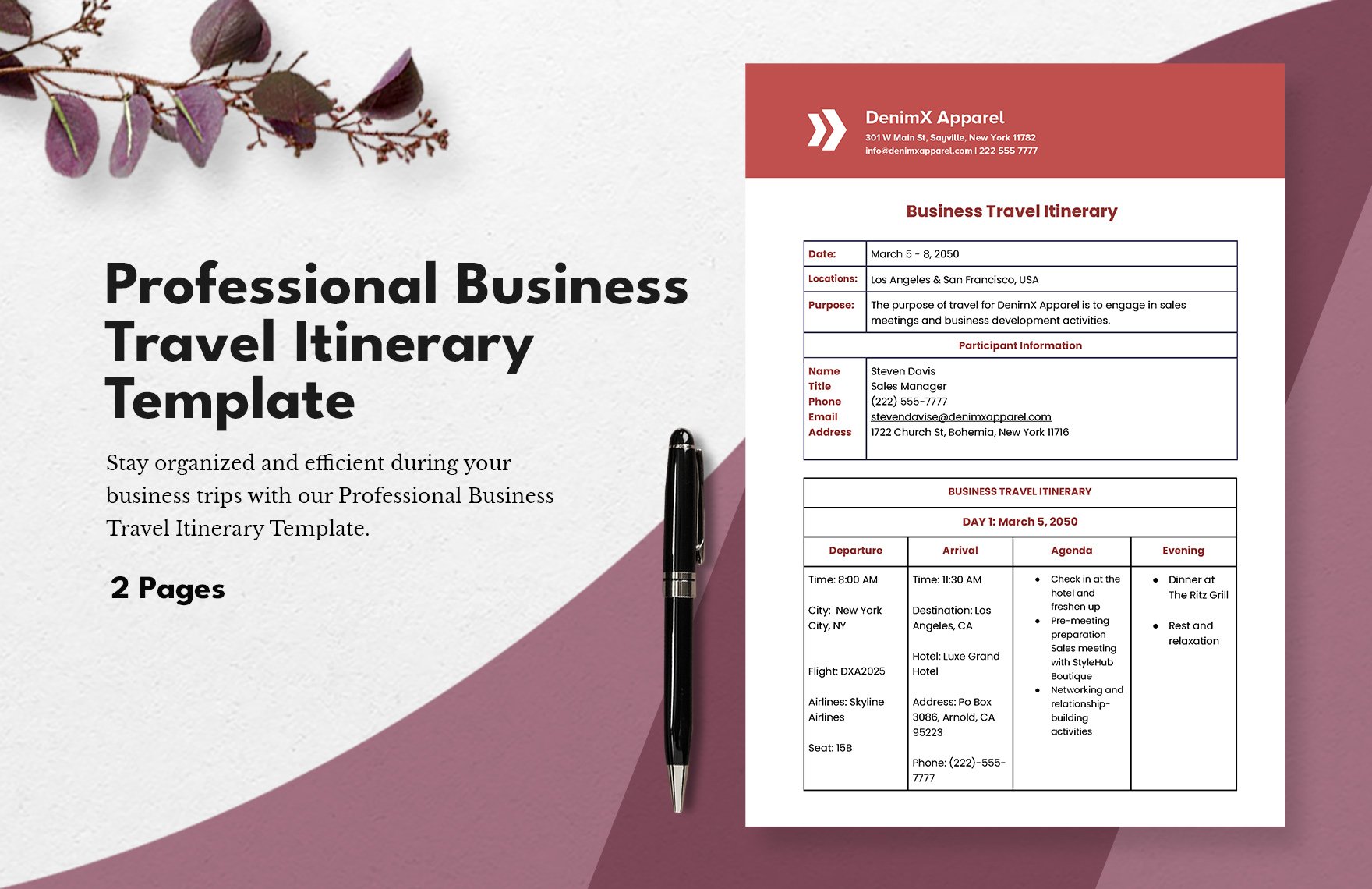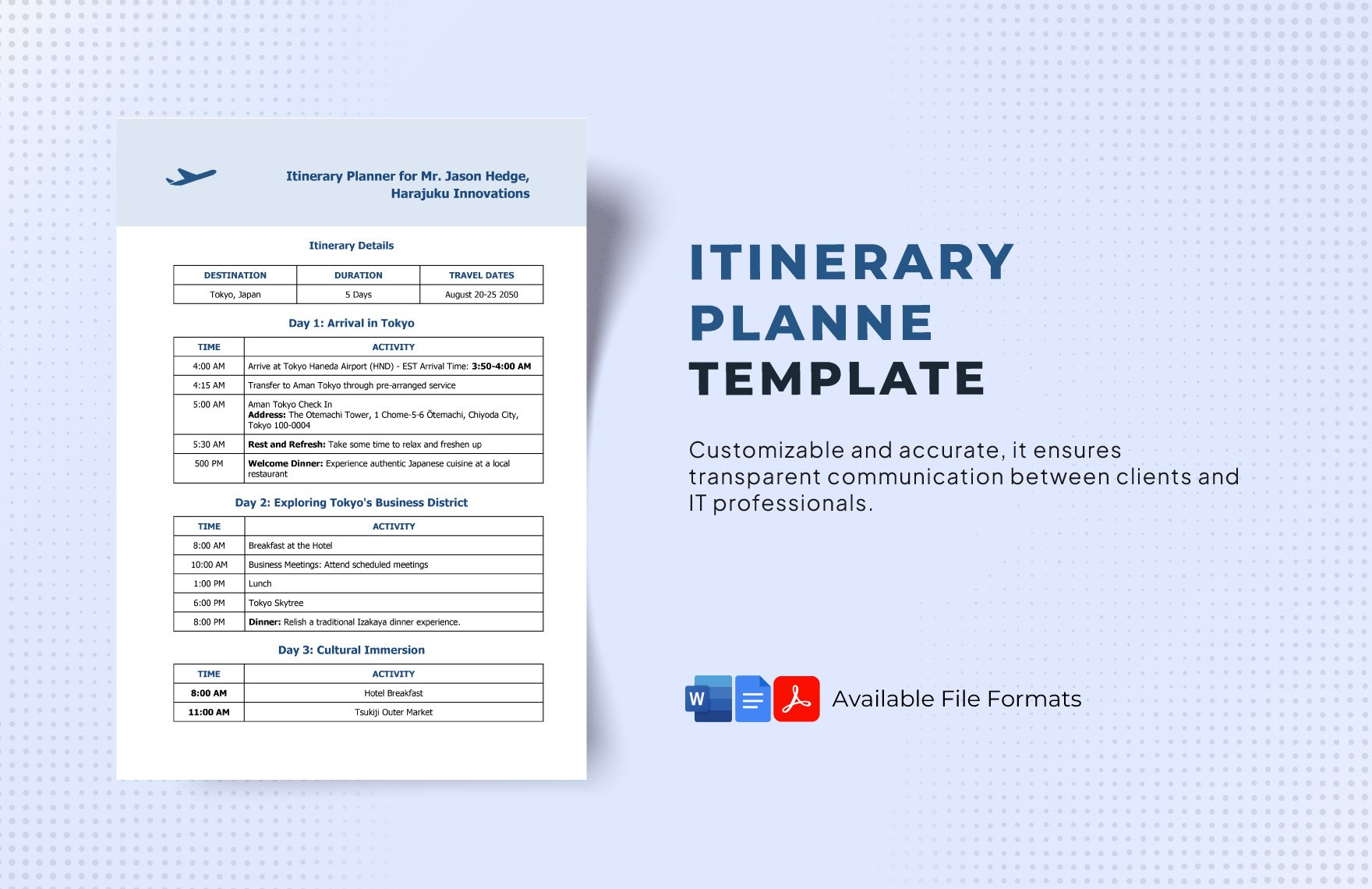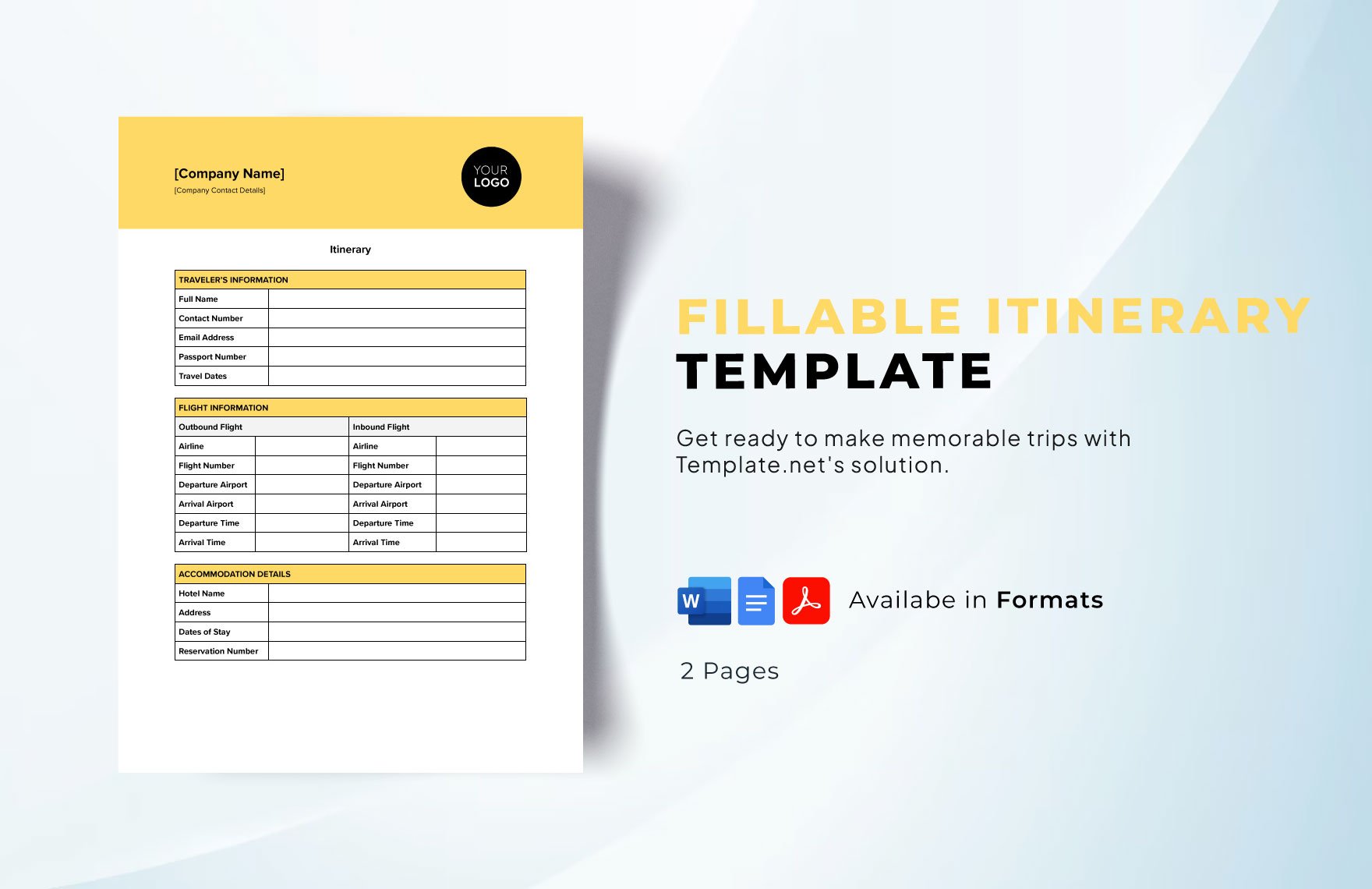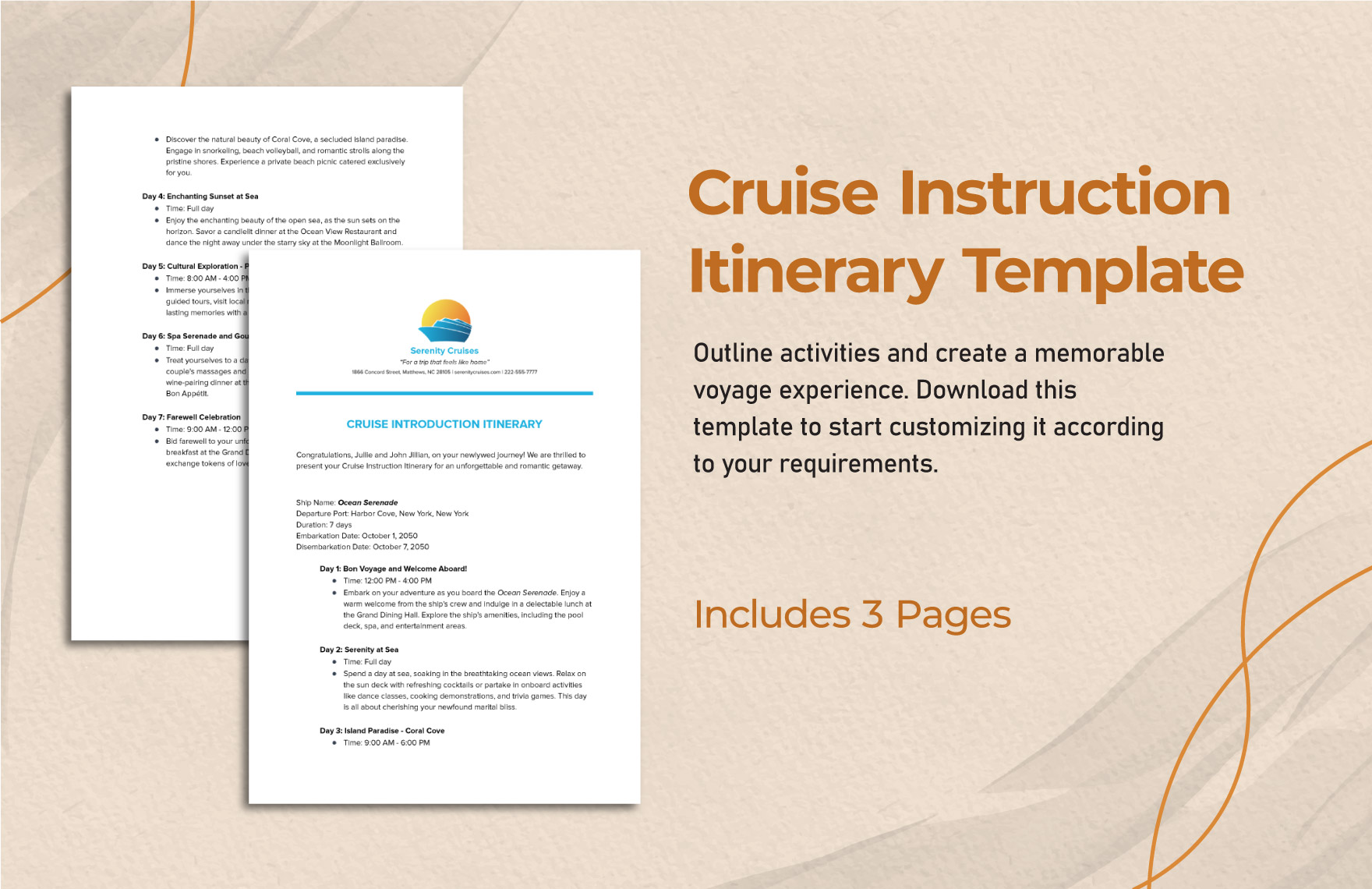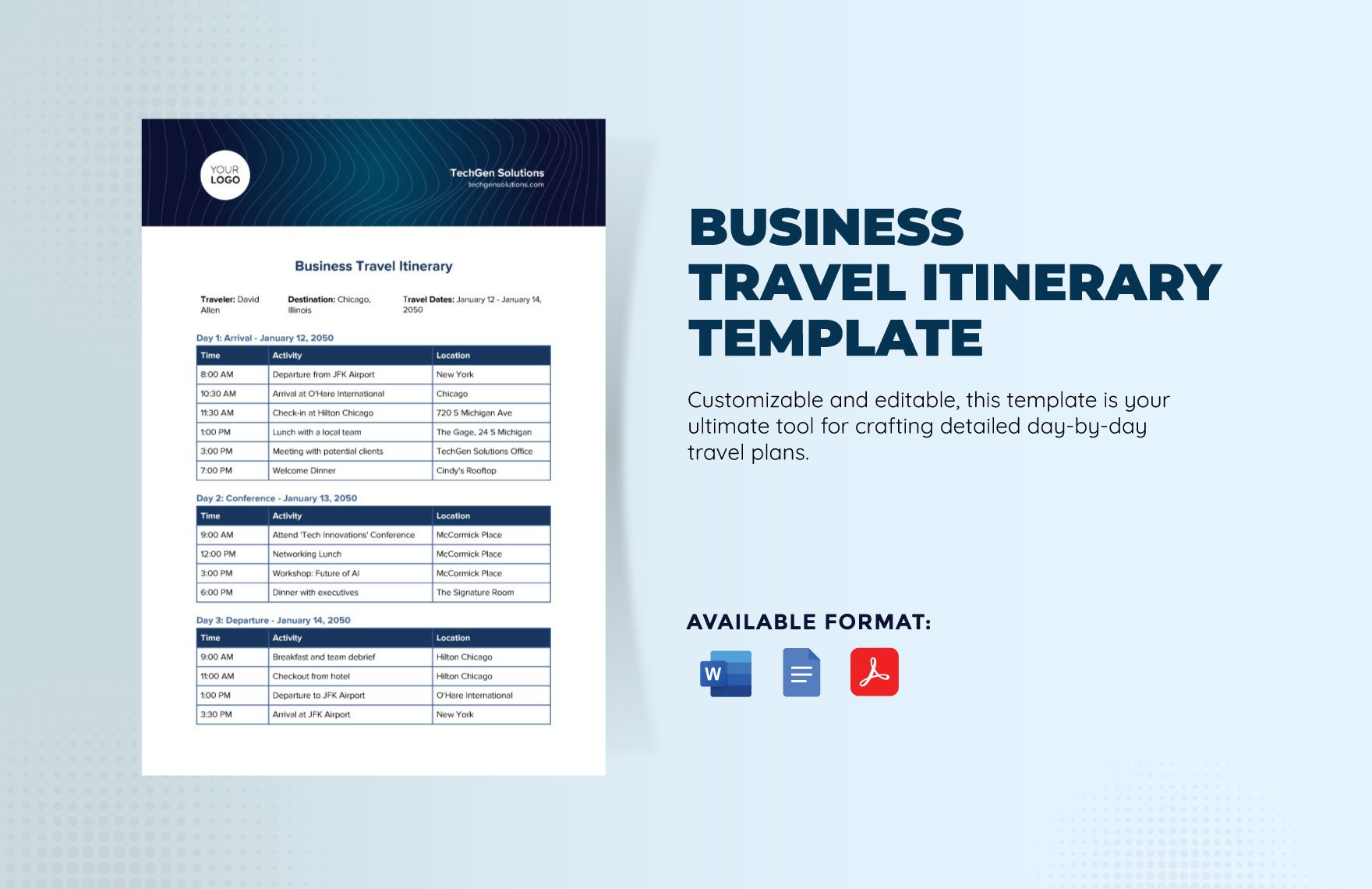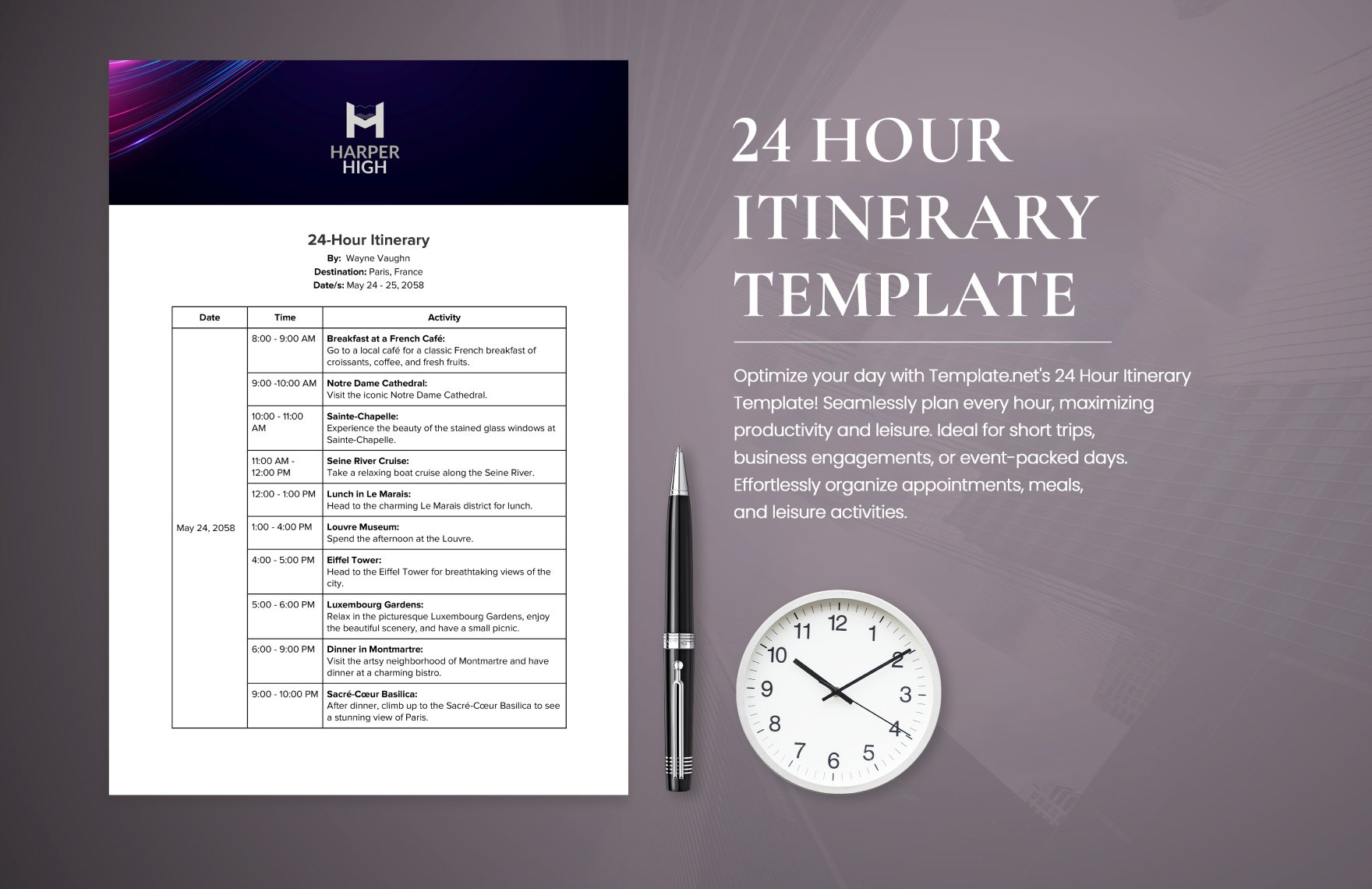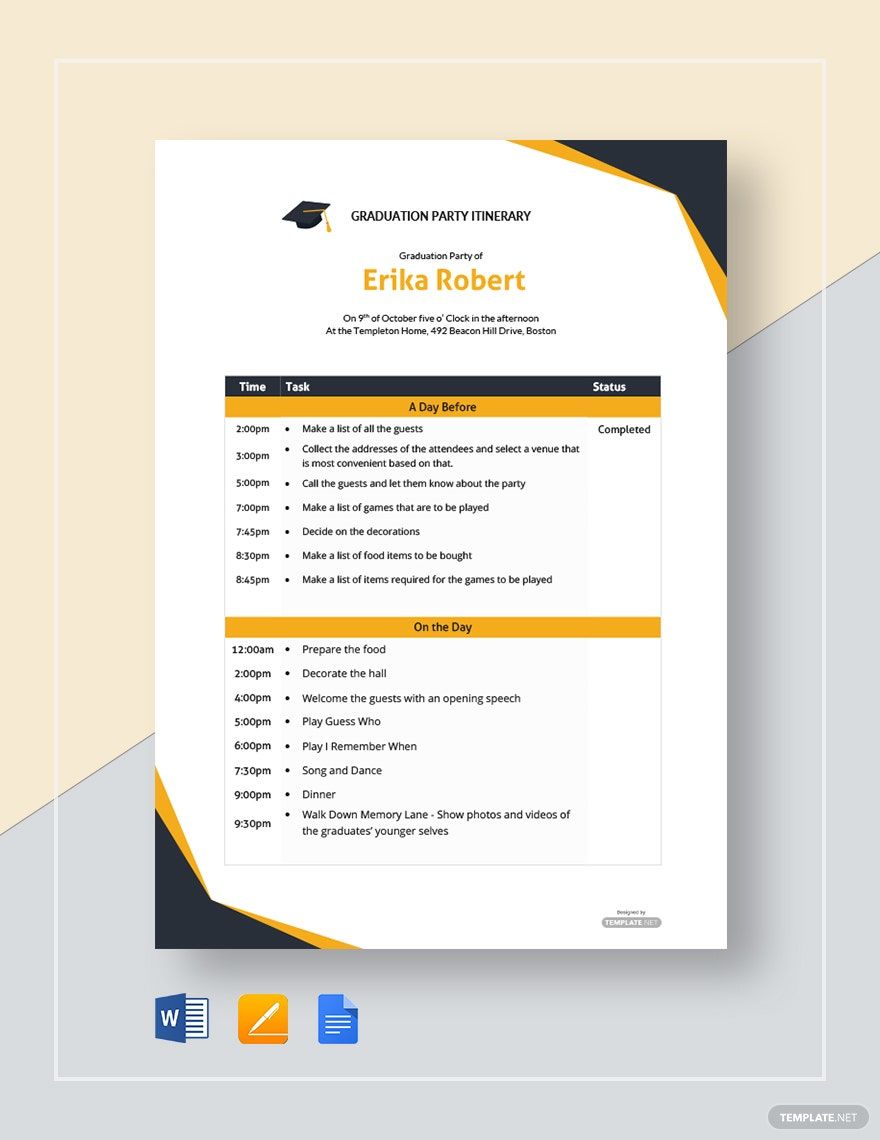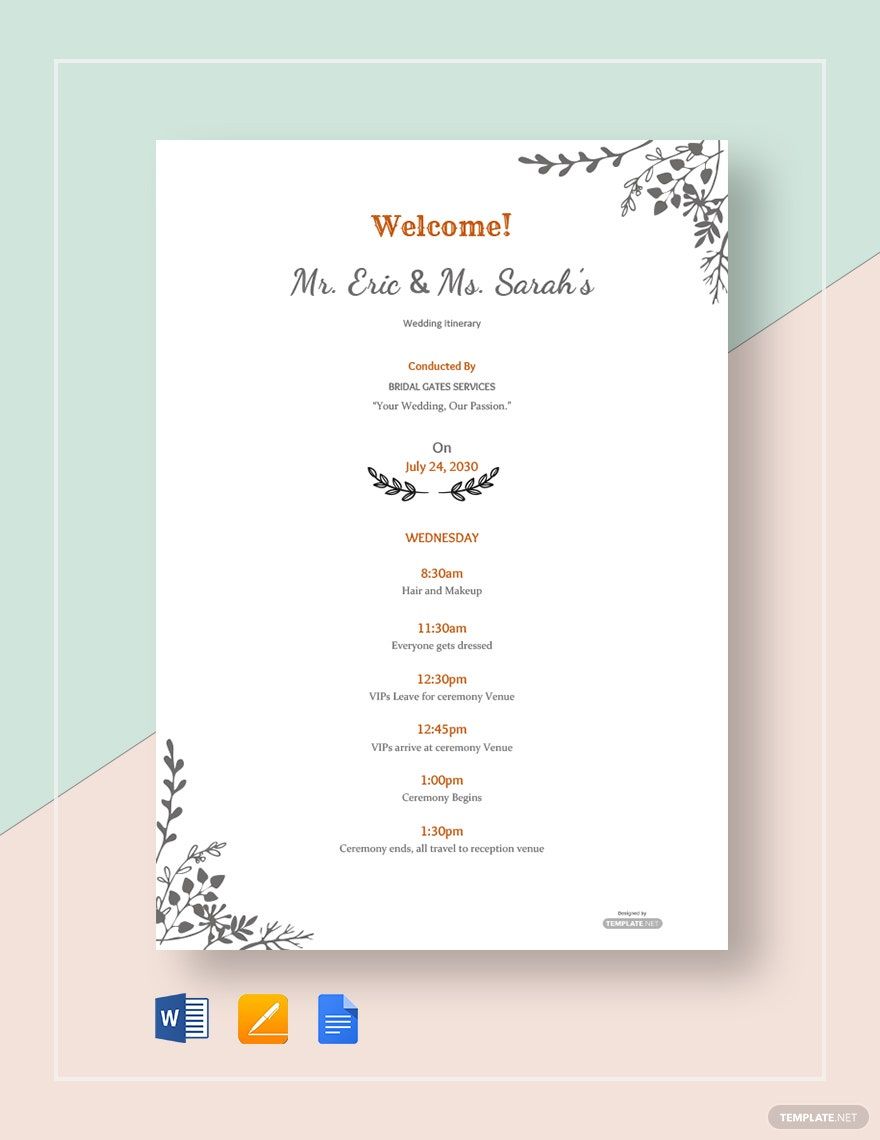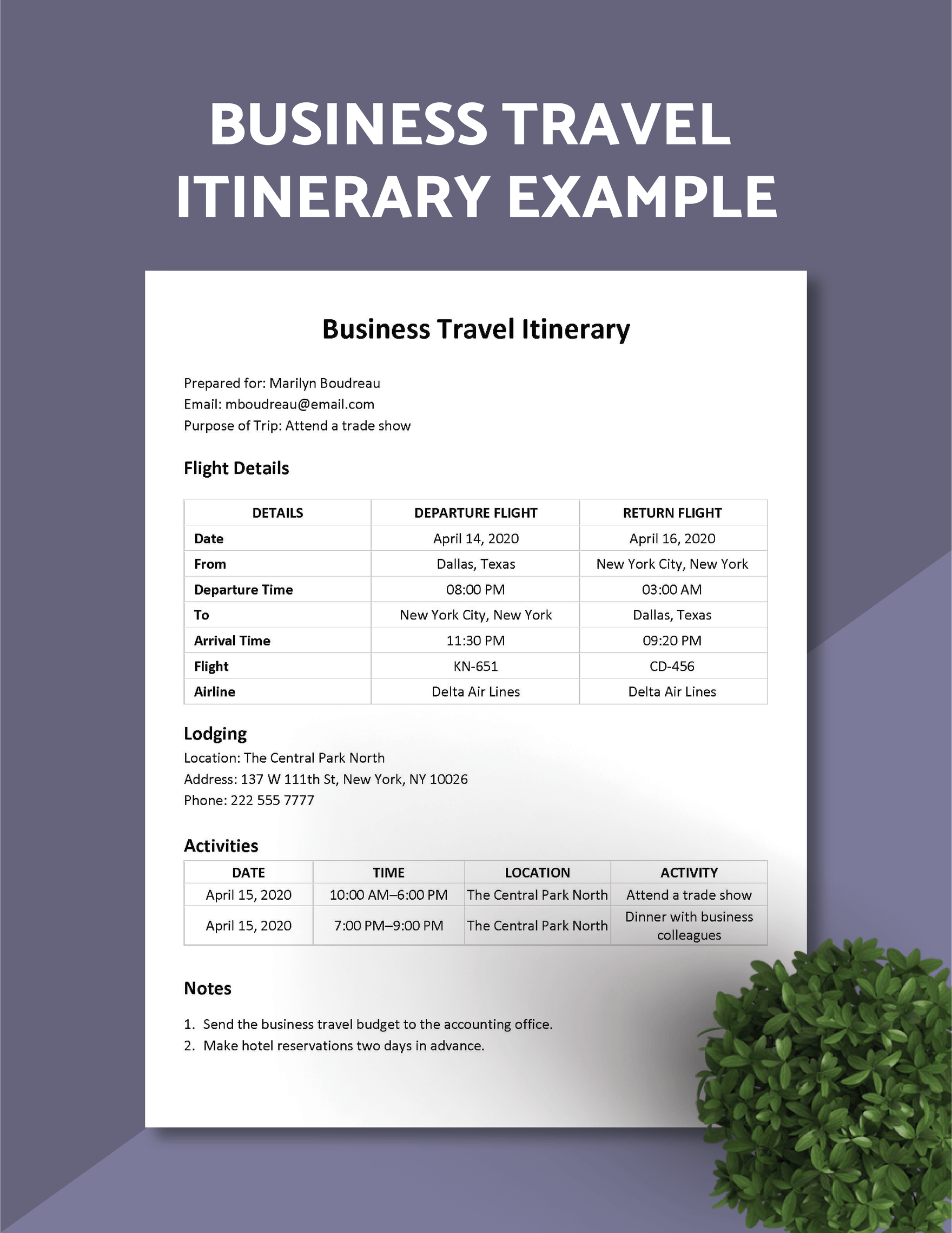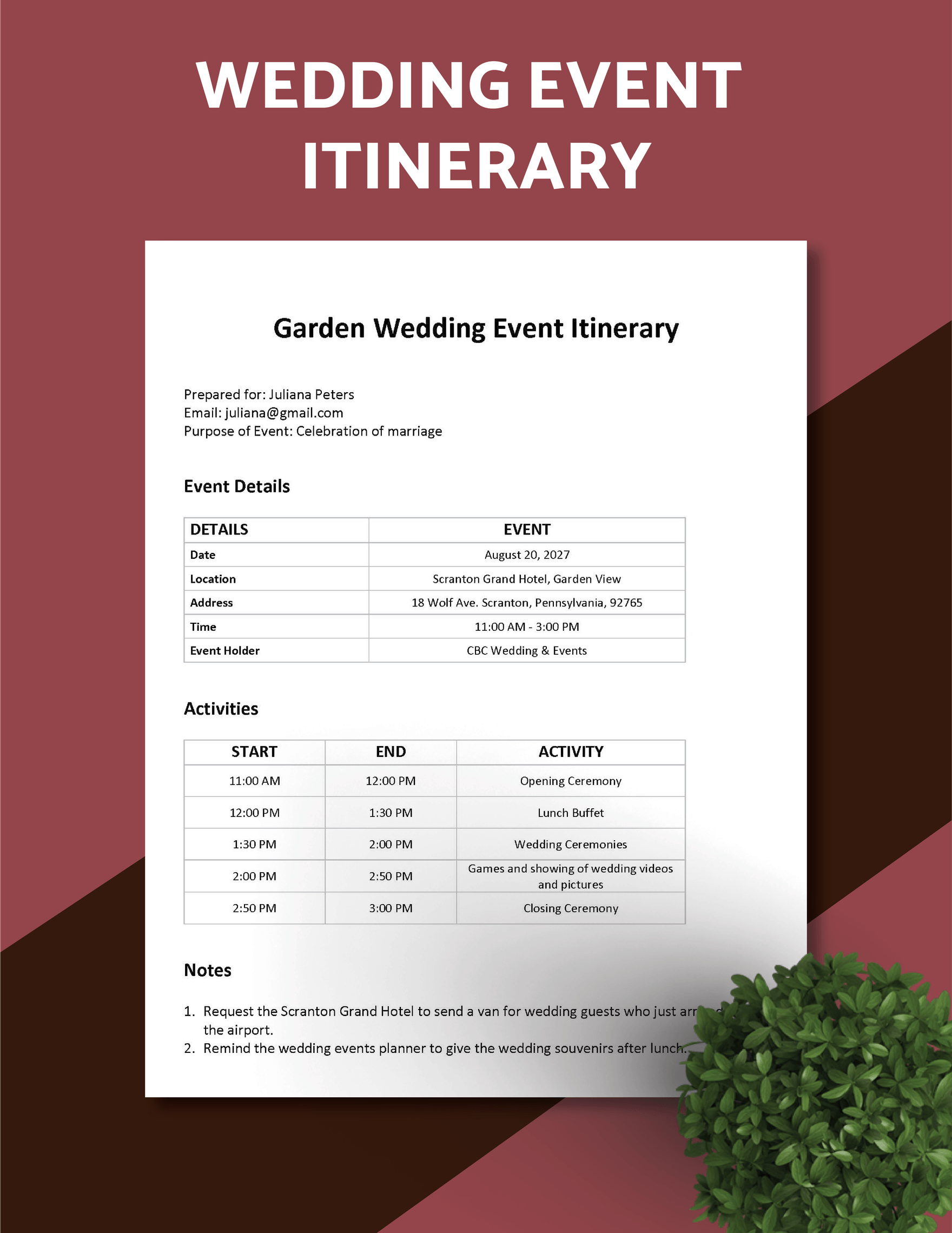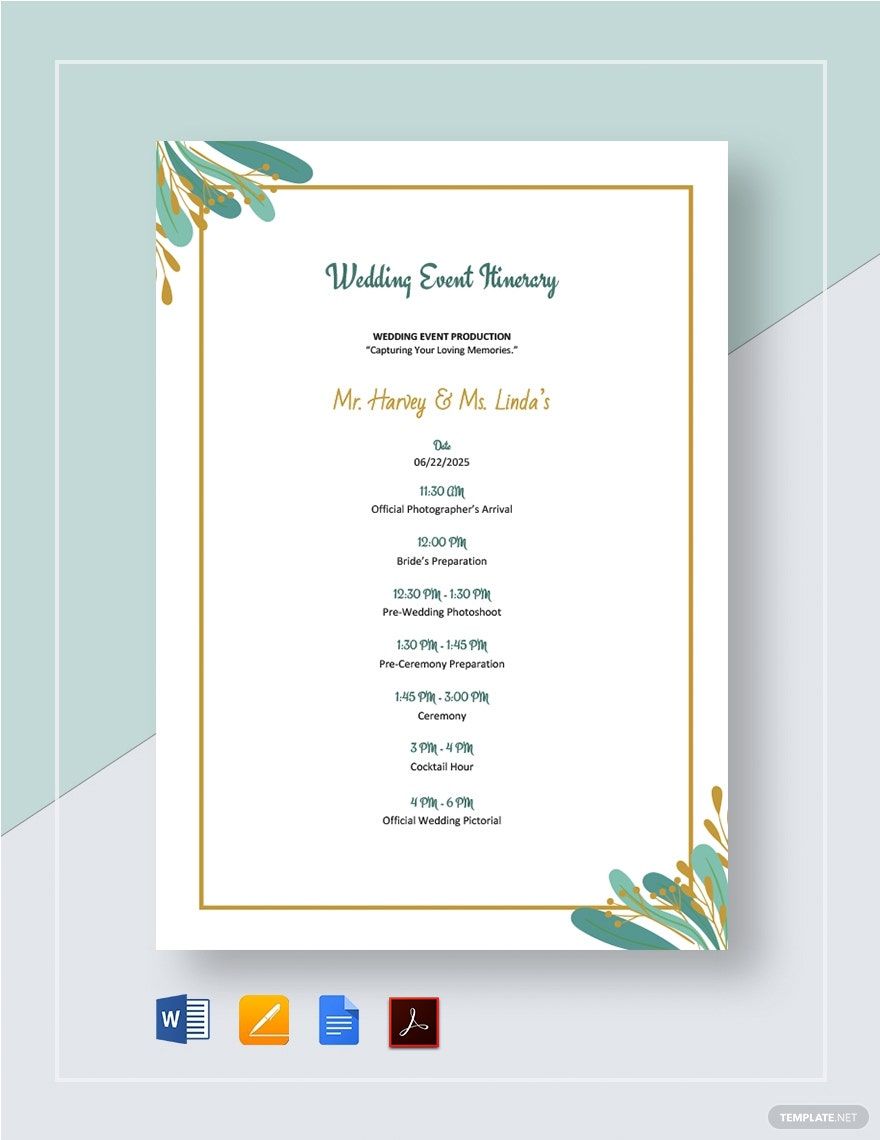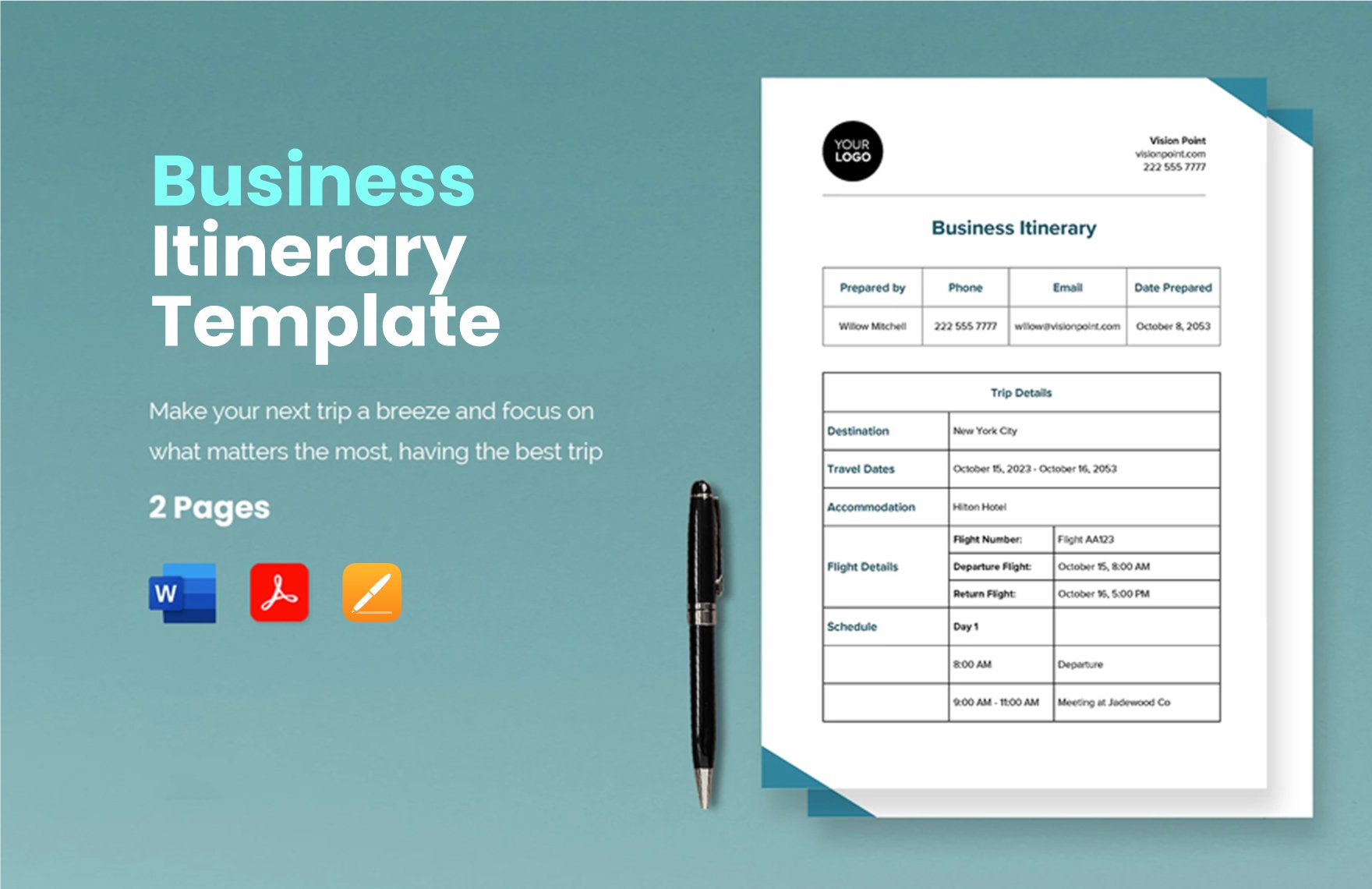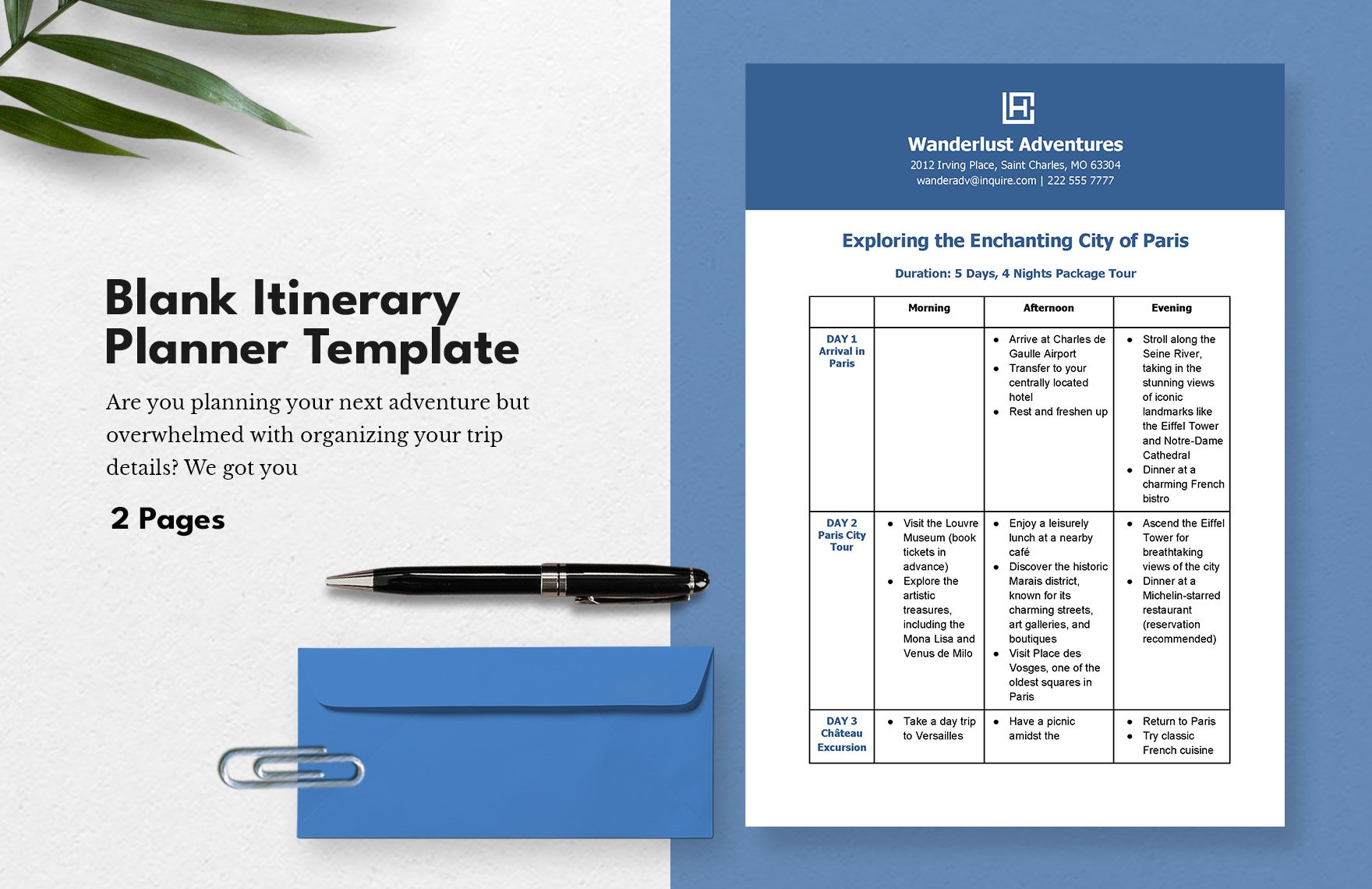Input all critical information and plan a detailed journey regarding a personal or business trip by downloading any of our free ready-made Itinerary Templates which you can personalize, customize or modify in your favorite software apps like Apple Pages for Mac. All simple itineraries are essential for maximizing your travel to its full advantage so you won't waste time deciding on where to go and stay. Perfect for business travel where you need to meet potential clients on a place and time of your choosing. Available A4 and US letter sizes. Print ready and perfect for commercial or personal printing. Use our premium templates to create a high-quality itinerary for business travels, vacation and holiday travels, international travels, destination weddings, and many more.
Itinerary Templates in Apple Pages
Explore professionally designed itinerary templates in Apple Pages that are free, customizable, and printable. Elevate your planning with top-quality designs. Download now!
